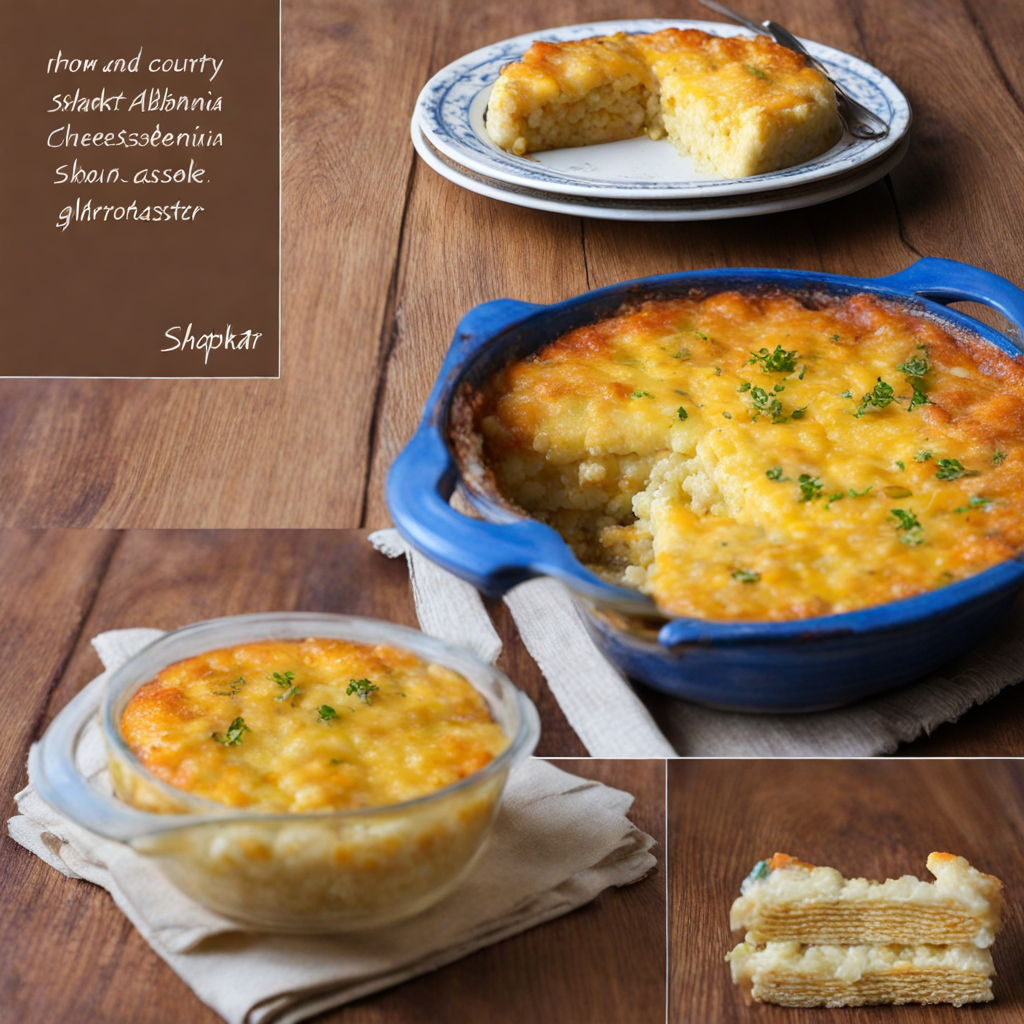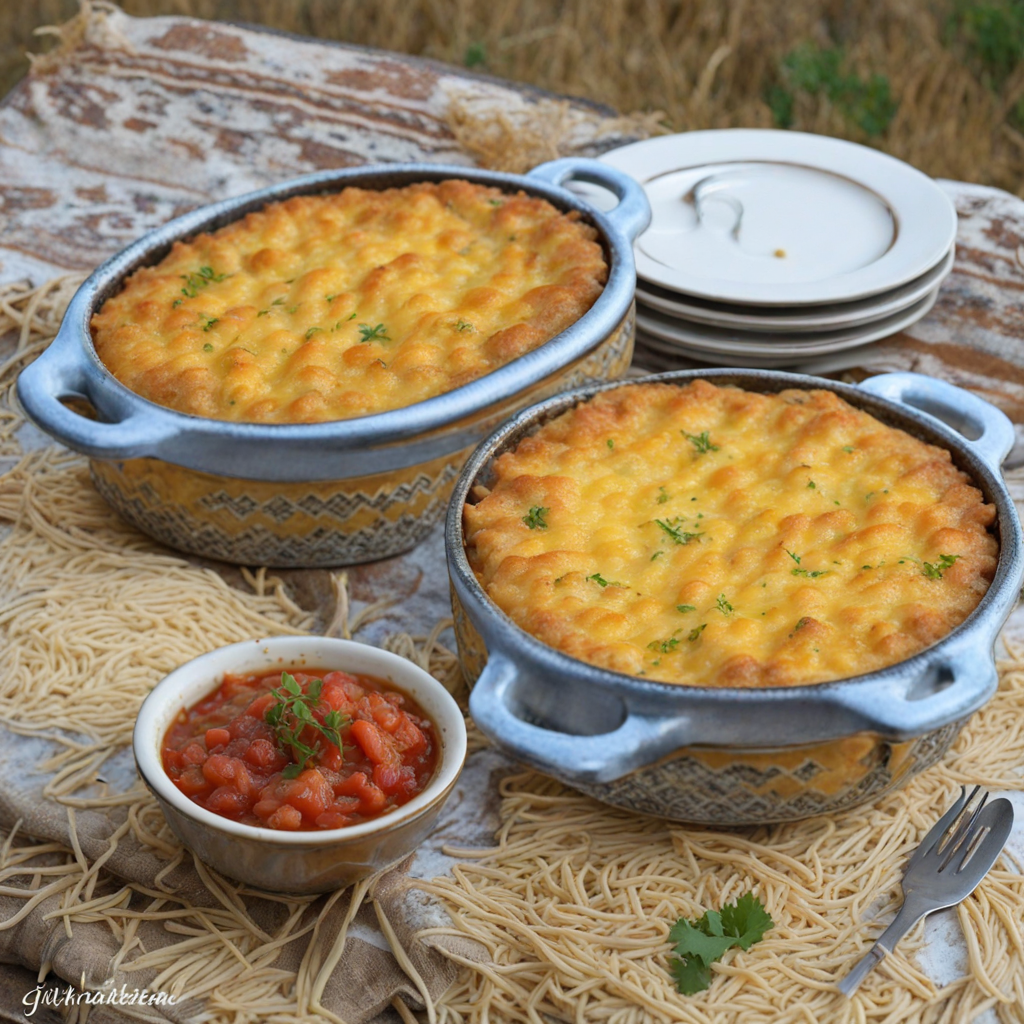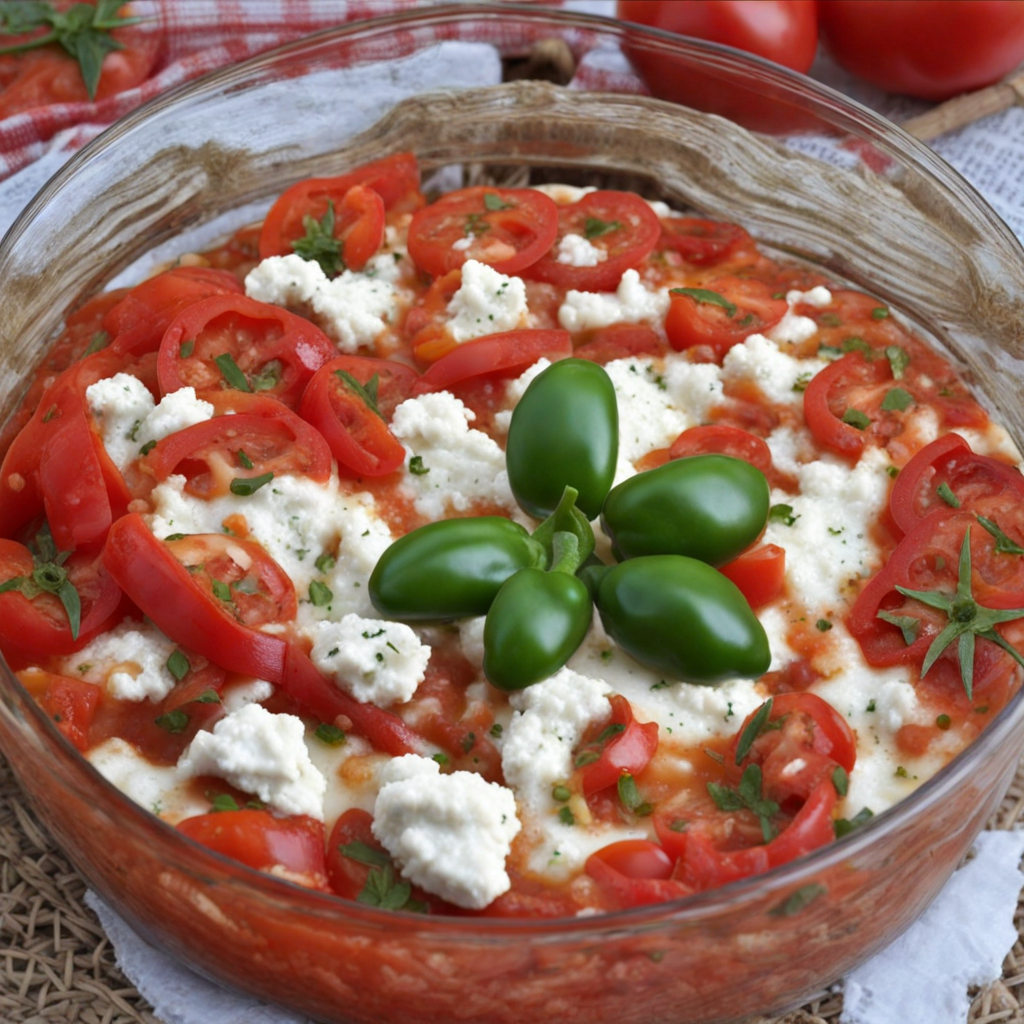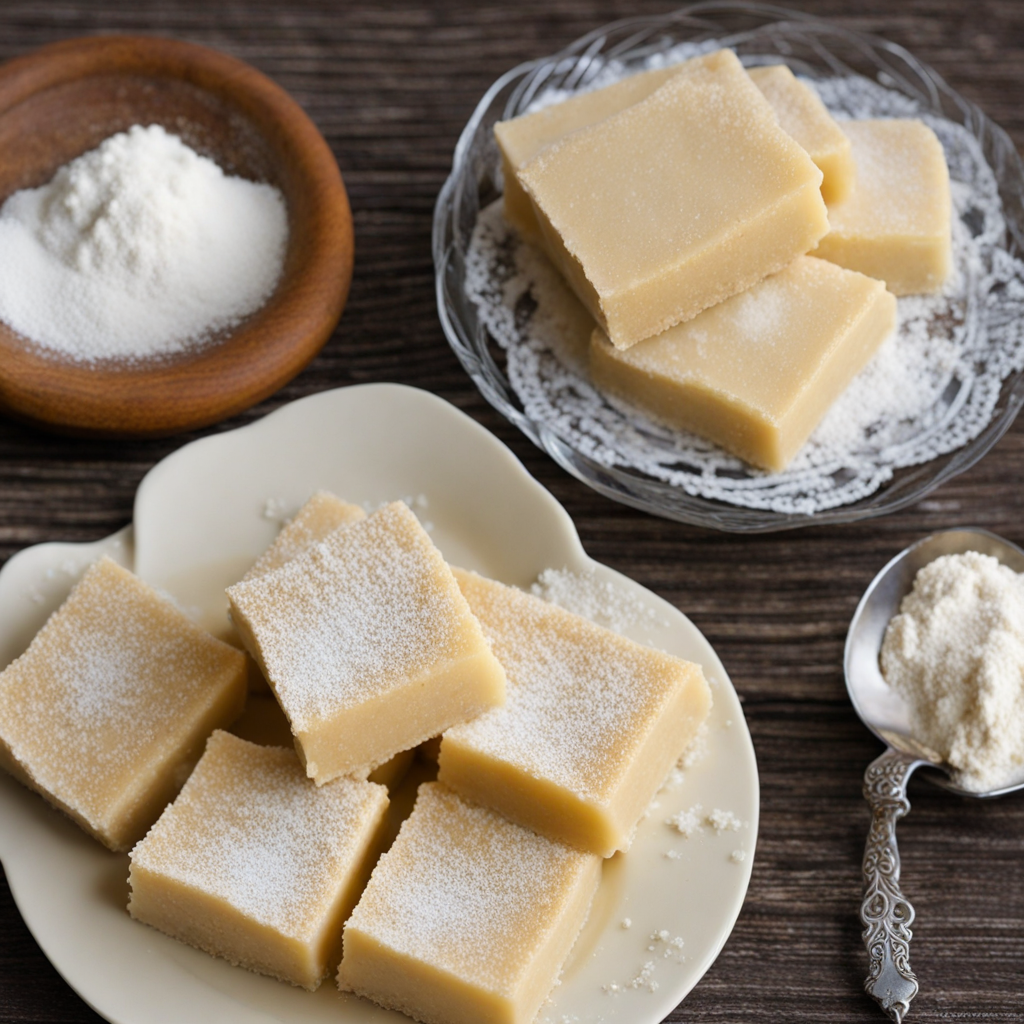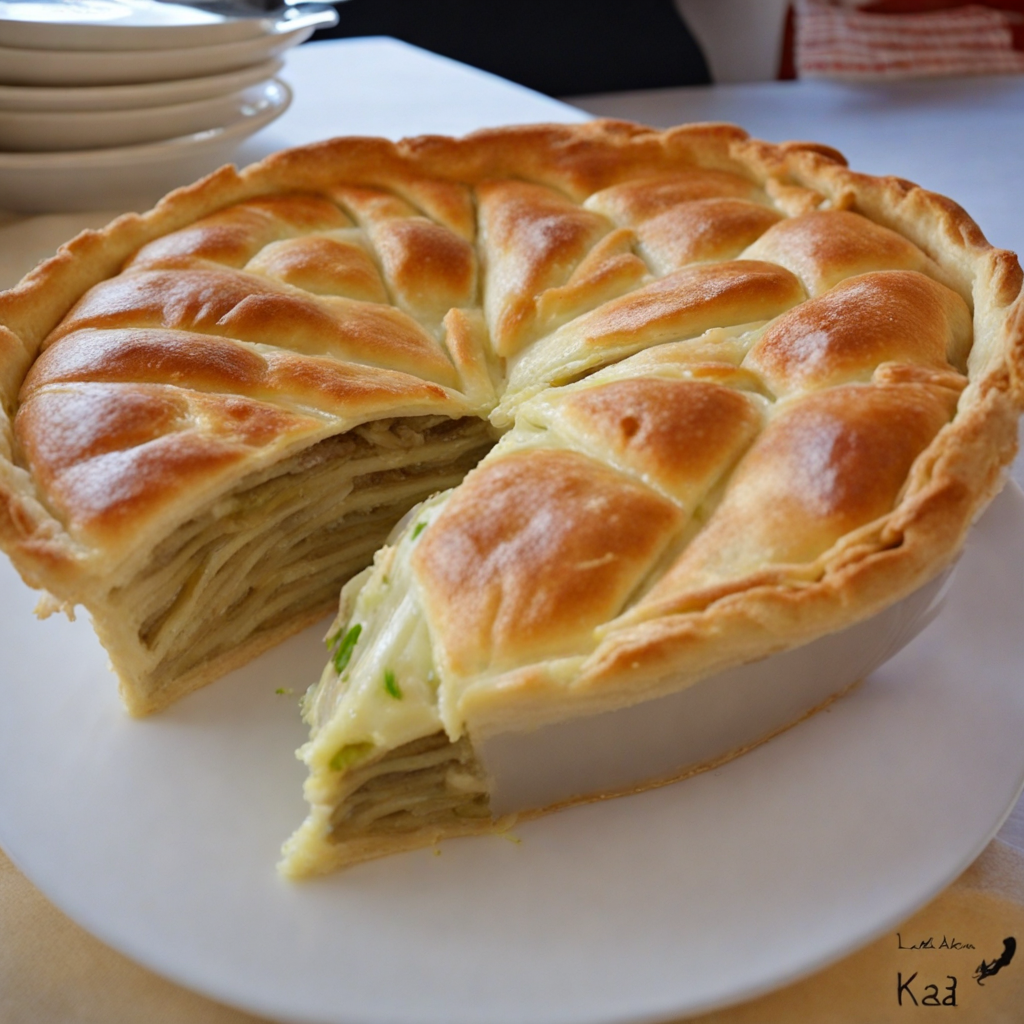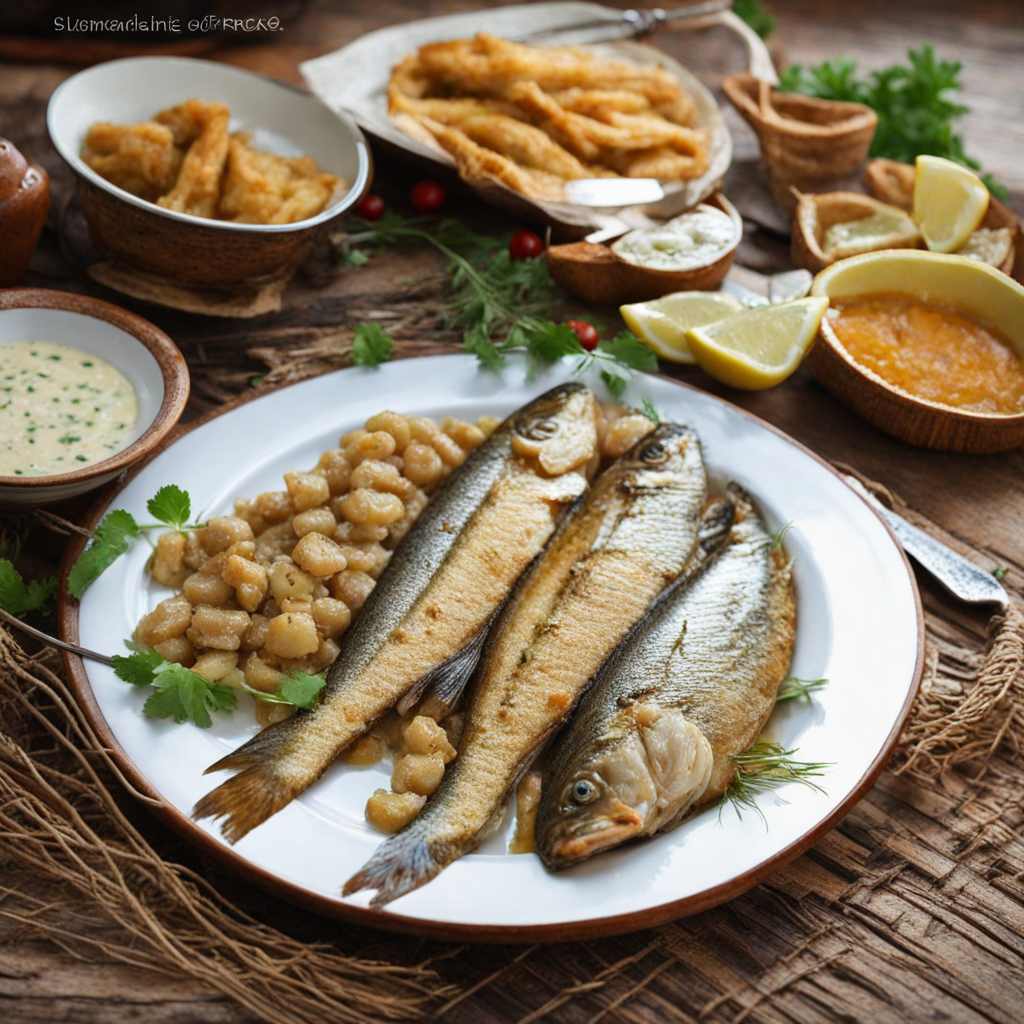Shapkat
Shapkat is a traditional Albanian dish that beautifully embodies the essence of Balkan cuisine, showcasing a rich tapestry of flavors and textures. This hearty meal typically consists of a savory filling of ground meat, often a mix of beef and pork, seasoned with aromatic herbs and spices such as garlic, paprika, and black pepper. What sets Shapkat apart is its unique preparation method: the meat is wrapped in a thin layer of dough, similar to that of a pastry, which is then baked until golden and crisp. The result is a delightful contrast of succulent filling encased in a flaky outer shell, making each bite an indulgent experience. Accompanying the Shapkat are often vibrant sides that enhance its flavor profile. A traditional serving may include a fresh salad of tomatoes, cucumbers, and onions dressed in a tangy vinaigrette, which adds a refreshing contrast to the richness of the dish. Additionally, a dollop of yogurt or a drizzle of olive oil can elevate the taste, providing a creamy texture that balances the savory elements. The combination of the warm, seasoned meat with the cool, crisp salad creates a harmonious blend that is both satisfying and invigorating. The cultural significance of Shapkat goes beyond its delightful taste; it is often enjoyed during family gatherings and celebrations, symbolizing togetherness and hospitality. As you take your first bite, you’ll be transported to the heart of Albania, where this dish is not just a meal but a celebration of local ingredients and culinary traditions. The experience of savoring Shapkat is as much about the flavors as it is about the stories and memories woven into every dish, making it a must-try for anyone adventurous enough to explore the diverse food landscape of Albania.
How It Became This Dish
The History of Shapkat: A Culinary Gem of Albania Shapkat is a traditional dish from Albania that embodies the rich tapestry of the country's culinary heritage. Often regarded as a comfort food, Shapkat showcases the unique flavors and ingredients that have been cultivated in the Albanian landscape for centuries. Its origins, cultural significance, and evolution reflect the broader historical and social context of Albania, making it a fascinating subject for food historians and enthusiasts alike. Origins The roots of Shapkat can be traced back to the rural areas of Albania, particularly in the regions of Shkodra and Kukës, where agriculture has been the backbone of local economies. The dish is believed to have originated among pastoral communities, where the availability of local ingredients dictated the recipes of the time. Shapkat is primarily made from cornmeal, which has long been a staple in Albanian cuisine due to the country's favorable climate for maize cultivation. The name "Shapkat" is derived from the Albanian word for "corn," reflecting the dish's primary ingredient. Traditionally, it is prepared as a type of flatbread or polenta, often served with various toppings or accompaniments such as yogurt, cheese, or seasonal vegetables. The preparation of Shapkat is deeply rooted in the communal aspects of Albanian culture, with families often gathering to prepare and enjoy the dish together, strengthening bonds and traditions. Cultural Significance Shapkat holds a special place in Albanian culture, serving as more than just a meal; it is a symbol of hospitality and community. In rural settings, it is common for families to prepare large batches of Shapkat to share with neighbors and guests. This practice reflects the deep-seated values of generosity and togetherness that are integral to Albanian society. The dish is often featured in celebrations and gatherings, such as weddings, religious festivities, and harvest festivals. During these events, Shapkat is typically accompanied by abundant side dishes, showcasing the agricultural bounty of the region. The act of sharing food, particularly Shapkat, reinforces social ties and emphasizes the importance of community in Albanian culture. Moreover, Shapkat has a unique connection to Albania's historical narrative. The dish has been passed down through generations, serving as a reminder of the resilience and adaptability of the Albanian people. Throughout various periods of turmoil, including the Ottoman occupation and the communist regime, traditional foods like Shapkat have played a crucial role in preserving cultural identity. The preparation and consumption of Shapkat became a way for families to maintain their customs in the face of external pressures. Development Over Time As Albania evolved through the 20th century, so too did Shapkat. The dish has undergone various adaptations, influenced by regional variations, modernization, and globalization. While the basic ingredients and preparation methods have remained consistent, the ways in which Shapkat is served and enjoyed have diversified. In urban areas, Shapkat has found its way into restaurants and cafes, where chefs experiment with contemporary twists on the traditional recipe. Some variations incorporate additional ingredients, such as herbs, spices, or even meats, catering to a wider range of palates. This culinary innovation highlights the adaptability of Shapkat, as it embraces both tradition and modernity. The rise of food tourism in Albania has also contributed to the resurgence of interest in traditional dishes like Shapkat. As travelers seek authentic culinary experiences, local restaurants and rural guesthouses have begun to promote traditional Albanian dishes, showcasing the unique flavors of the region. This has led to a renewed appreciation for Shapkat among both locals and visitors, elevating its status from a humble comfort food to a celebrated culinary experience. Furthermore, the global interest in healthy and natural foods has prompted many to rediscover traditional recipes like Shapkat, which emphasize whole grains and locally sourced ingredients. With a growing awareness of the importance of sustainable eating practices, Shapkat stands out as a nourishing option that reflects both Albanian agricultural practices and the global movement towards healthier diets. The Modern Context In the contemporary context, Shapkat continues to be a cherished dish, bridging the gap between past and present. With Albania's increasing integration into the global culinary scene, Shapkat has become a symbol of national pride, representing the country's rich agricultural heritage and cultural identity. It is often featured in food festivals and cultural events, where chefs and home cooks alike come together to celebrate their culinary roots. Moreover, Shapkat's preparation has also evolved with the advent of technology. While traditional methods of cooking over an open flame or in a wood-fired oven remain popular, many households now utilize modern kitchen appliances, making the preparation process more efficient. This shift does not diminish the cultural significance of the dish; rather, it reflects the ongoing evolution of culinary practices in response to changing lifestyles. Conclusion Shapkat is more than just a traditional dish; it is a testament to the resilience and adaptability of the Albanian people. Its origins in rural communities, cultural significance in fostering social bonds, and evolution in the face of modernity all contribute to its enduring appeal. As Albania continues to embrace its culinary heritage while integrating contemporary influences, Shapkat remains a beloved staple, symbolizing the rich history and vibrant culture of this Balkan nation. In a world that is increasingly globalized, the story of Shapkat serves as a reminder of the importance of preserving traditional foods and practices. Through the lens of Shapkat, we can appreciate the complexities of identity, community, and sustainability that shape our understanding of food and its role in our lives. As we savor a piece of Shapkat, we are not just enjoying a meal; we are partaking in a rich narrative that spans generations, celebrating the past while embracing the future.
You may like
Discover local flavors from Albania


